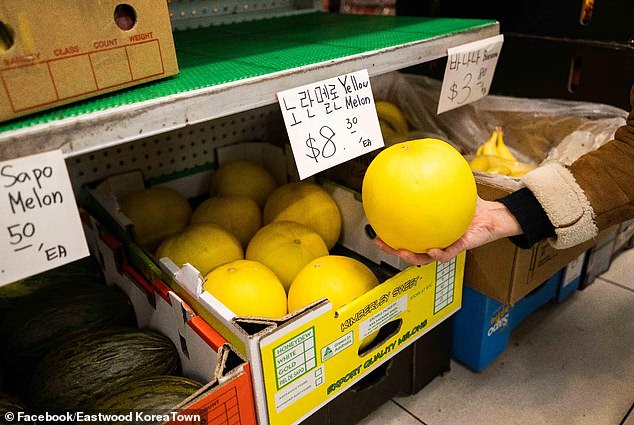An insolvency expert has revealed the five best and worst businesses Australians can start during a cost of living crisis.
Insolvencies are now at their highest level in more than a decade thanks to aggressive interest rate hikes and more pain is expected.
Last month the Reserve Bank left interest rates unchanged at a 12-year high of 4.35 percent, but with inflation still high there are fears of further rate hikes and slightly higher unemployment.
The cost of living crisis comes at a time when Australians are increasingly dissatisfied with their wages failing to keep pace with rising prices.
Hays’ latest Salary Guide found that 73 per cent of people surveyed were dissatisfied with their salary and did not believe it reflected their performance.
Hays Asia Pacific managing director Matthew Dickason said the cost of living crisis had encouraged many Australians to leave their jobs in search of higher wages.
No doubt some Australians will consider starting their own business given that wages are barely keeping up with inflation, which is now back to four per cent.
Matthew Caddy, a partner at restructuring firm McGrathNicol with more than 25 years’ experience handling corporate insolvencies, told Daily Mail Australia that companies could survive if they offered good value for money or a product that people couldn’t live without.
While supermarkets are thriving regardless of the economy, smaller, value-priced grocery stores could also weather the cost-of-living crisis, including Asian specialty stores.
GOOD BUSINESS
1. Grocery stores
While supermarkets are thriving regardless of the economy, smaller, value-priced grocery stores could also weather the cost-of-living crisis, including Asian specialty stores.
“Generally, at times like this, you see supermarkets doing well in terms of sales because more people are buying food to cook at home rather than going out,” Caddy said.
“Any low-cost option works well in this environment.”
2. Tutoring
Demand for education remains steady even as consumers have less disposable income because parents continue to prioritize after-school classes for difficult subjects like math.
“There is a huge demand for tutoring – education has always been a priority for people and there is probably an increasing prevalence of tutoring services and post-Covid, that is being done through online platforms,” Caddy said.
3. Garbage collection
Waste service companies, which collect rubbish for local councils or provide containers at construction sites, are needed no matter how the economy is doing.
“They’re not going to experience an increase in insolvencies as the economy tightens because waste services still need to be addressed,” Caddy said.
4. Home care for the elderly

Baby boomers who want to live out their final years at home rather than in a nursing home will want more in-home help (archive image)
Baby boomers who want to live out their final years at home rather than in a nursing home will need more in-home care.
“As our population ages, there’s obviously going to be increased demand and sustained increased demand over a long period of time – people in that sector have the opportunity to do well,” he said.
5. Farmers
Fruit and vegetable growers and meat producers thrive, regardless of economic activity, because people need to eat.
Farmers are therefore less likely to encounter difficulties in obtaining a bank loan even in times of drought or floods.
“Conditions have been pretty good and it’s also a sector that’s probably viewed more favorably from a credit position,” Caddy said.
BAD BUSINESS
1. Apartment builders
Apartment builders in particular are struggling as Australians prefer to live in houses, while developers are battling eroding margins.
“Most insolvencies in the construction sector relate to higher-density construction projects, rather than land and building developments,” Caddy said.
“In these projects, margins are very tight and when there is reduced demand, everyone competes for what is available and that further reduces margins.”
Construction was by far the hardest hit sector in Australia, with 2,832 companies filing for bankruptcy in the year to June 16 (up 33.7 per cent), according to data from the Australian Securities and Investments Commission.
Fixed-price contracts and rising building materials costs are crippling builders, even though Australia has a housing shortage due to record levels of immigration.

Apartment builders in particular are struggling as Australians prefer to live in houses, while developers are battling eroding margins (pictured, a construction site in Parramatta, Sydney).
2. Restaurants
Higher interest rates mean fewer Australians with a mortgage are eating out or ordering takeaways.
“Hospitality is strongly tied to discretionary spending and clearly in terms of consumer demand as dollars in people’s pockets are generally lower due to cost of living pressures,” Caddy said.
In the accommodation and catering sector, 1,576 bankruptcies were recorded, an increase of 49%.
3. Women’s fashion retailers
Women’s fashion retailers face difficulties when they are left with unsold stock at the end of a season.
“If you’re selling fashion retail, you need to be able to move between seasons,” he said.

Higher interest rates mean fewer Australians are eating out or ordering takeaways (stock image)
4. Mortgage brokers
The banking royal commission had led to new rules and caused many mortgage brokers to leave the sector.
“Regulation makes the cost higher – if you’re a small company, you don’t necessarily have the ability to adapt and comply with requirements,” Caddy said.
5. Specialized manufacturers
Higher labour costs in Australia compared with Asia are hurting specialist technology manufacturers that produce components for things like fishing rods and bicycles.
“In Australia, carbon fibre is being made, where labour costs are huge, whereas in parts of Asia, the focus is now on that – labour costs are much lower,” he said.


